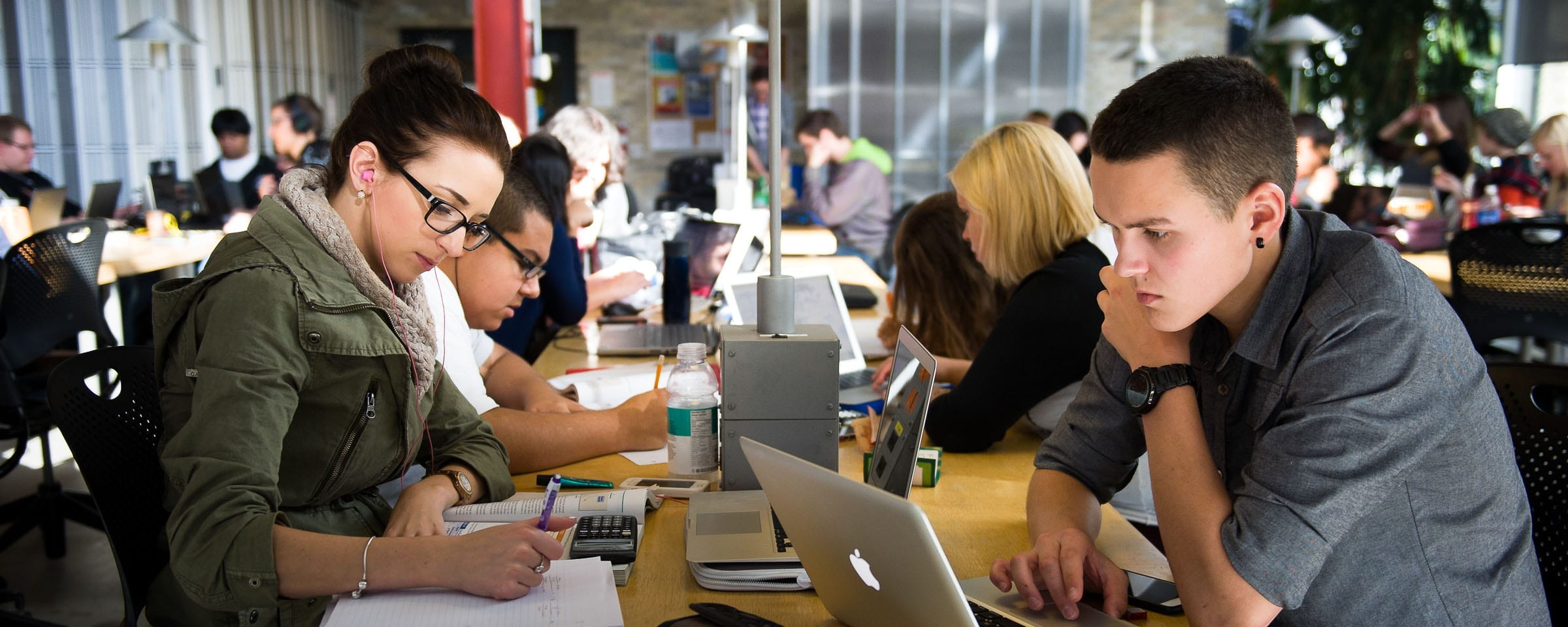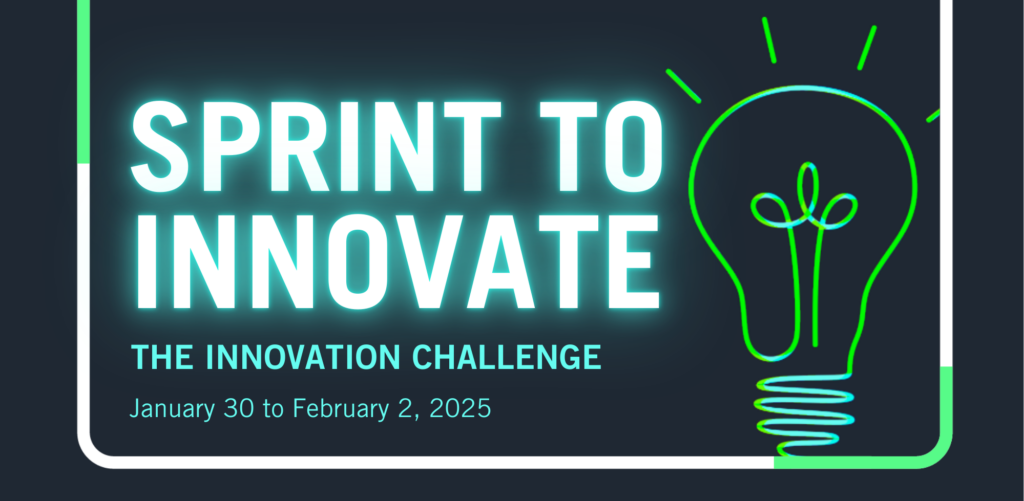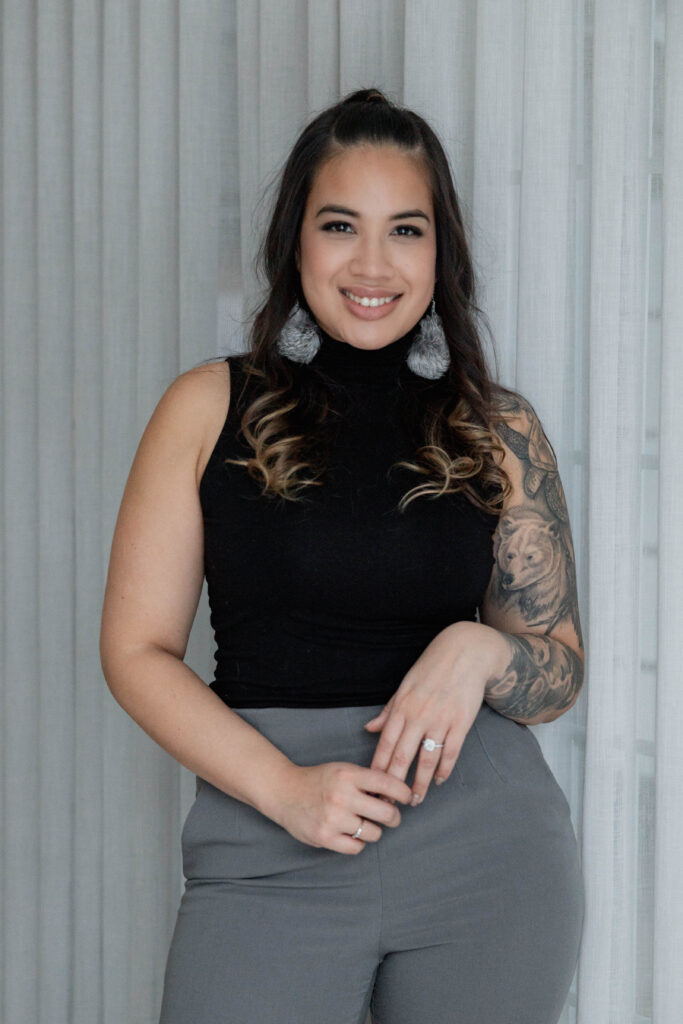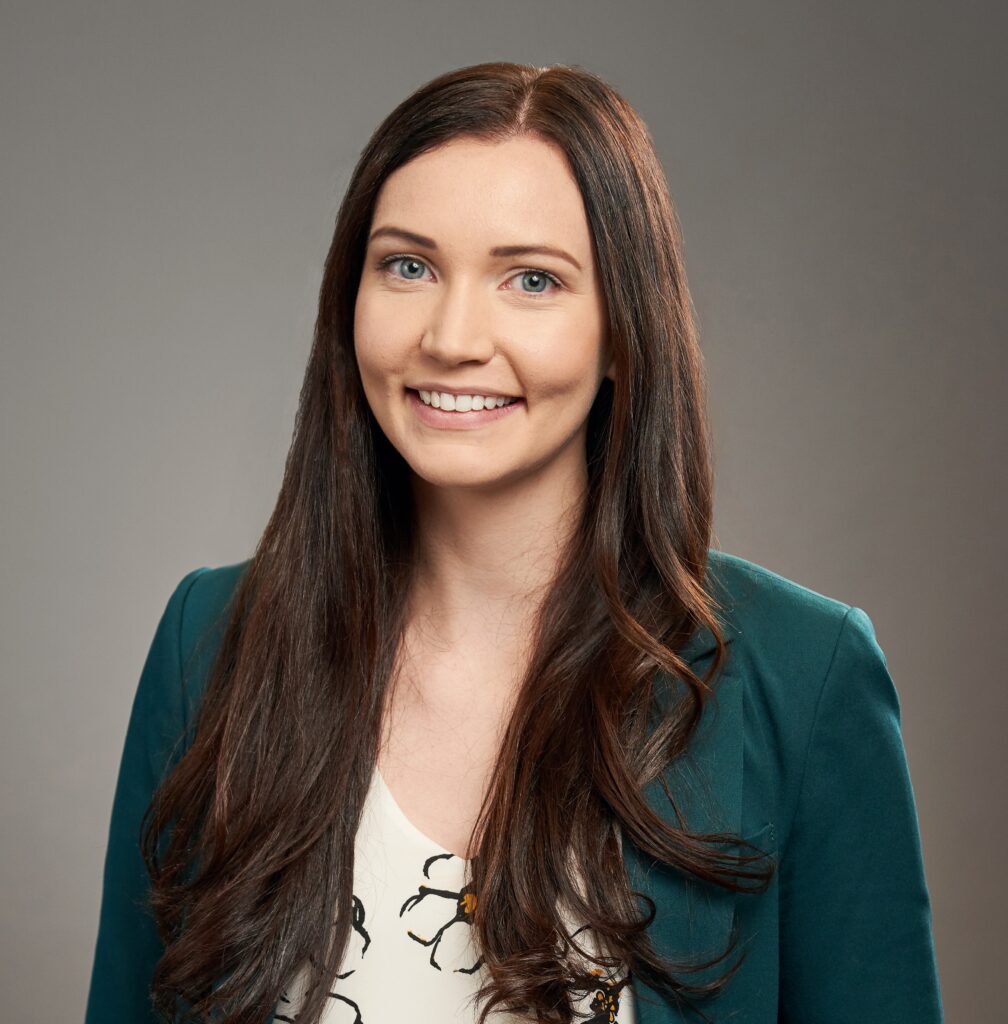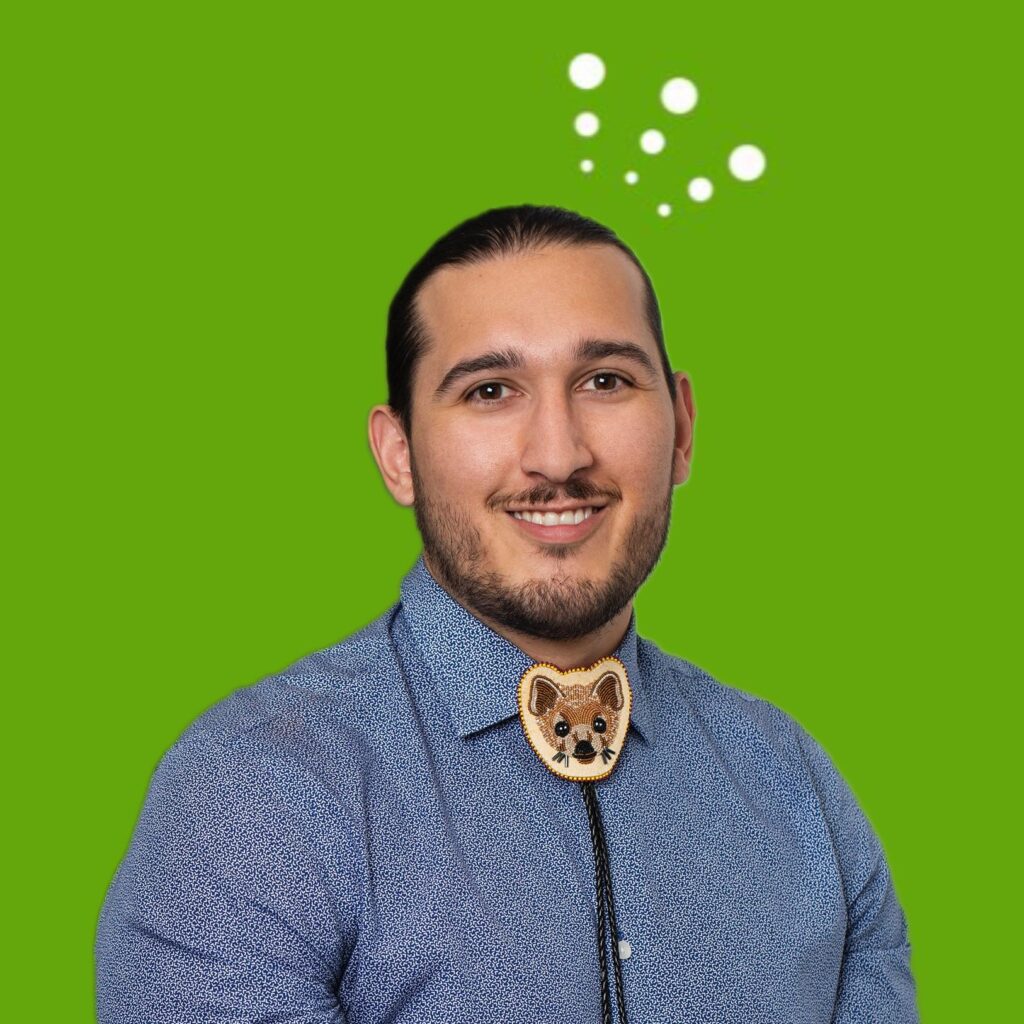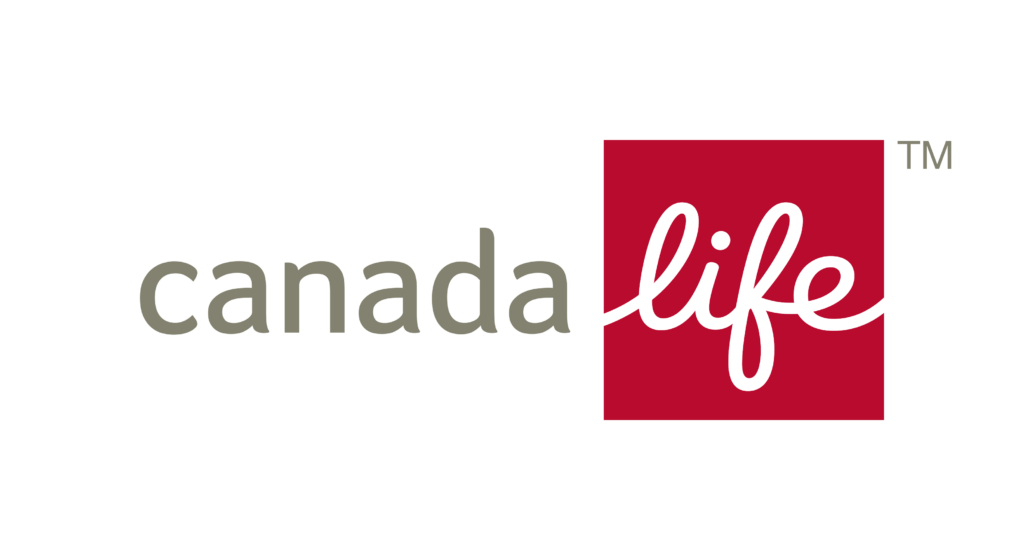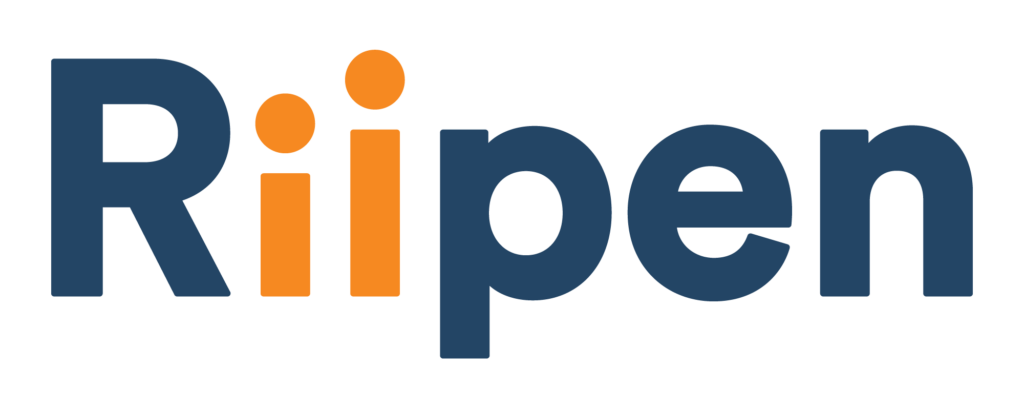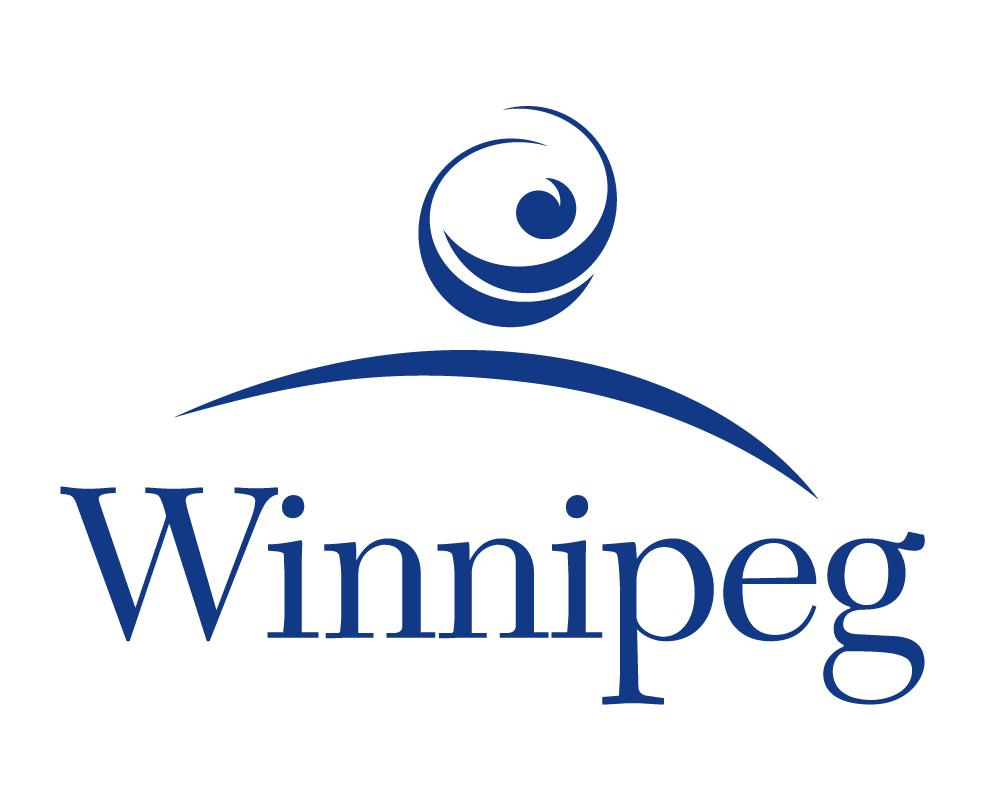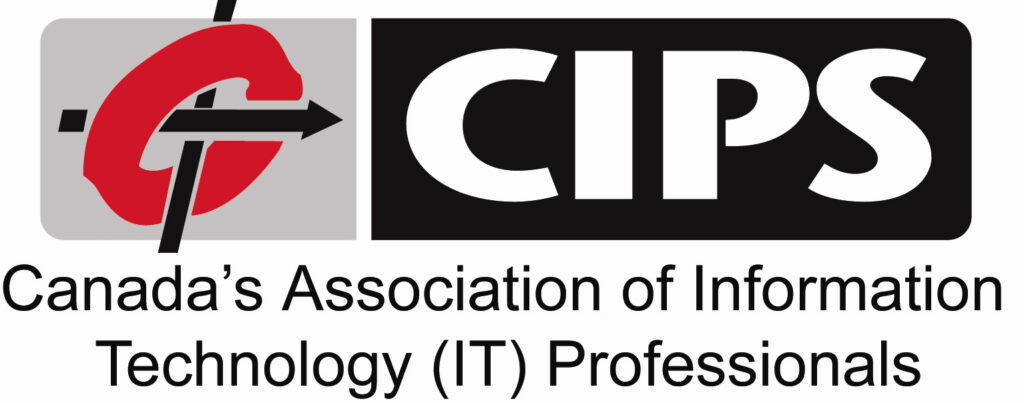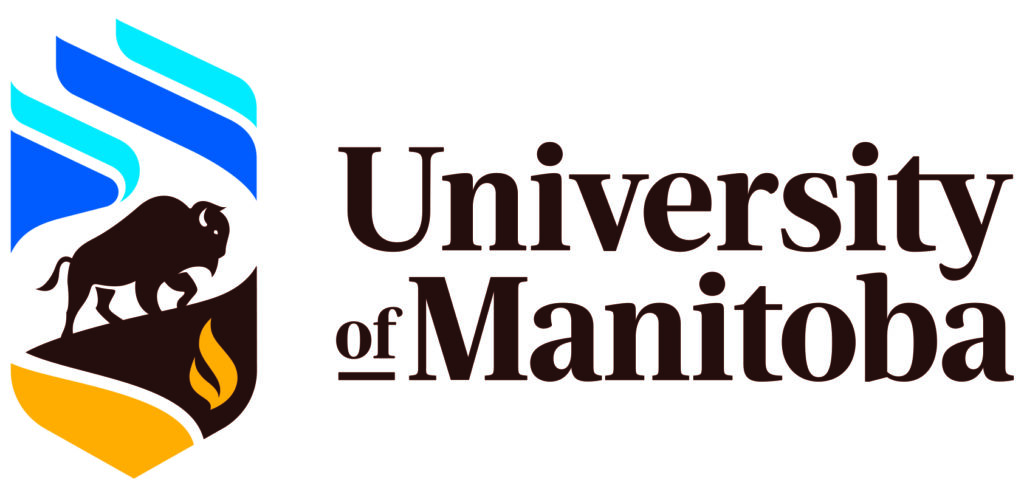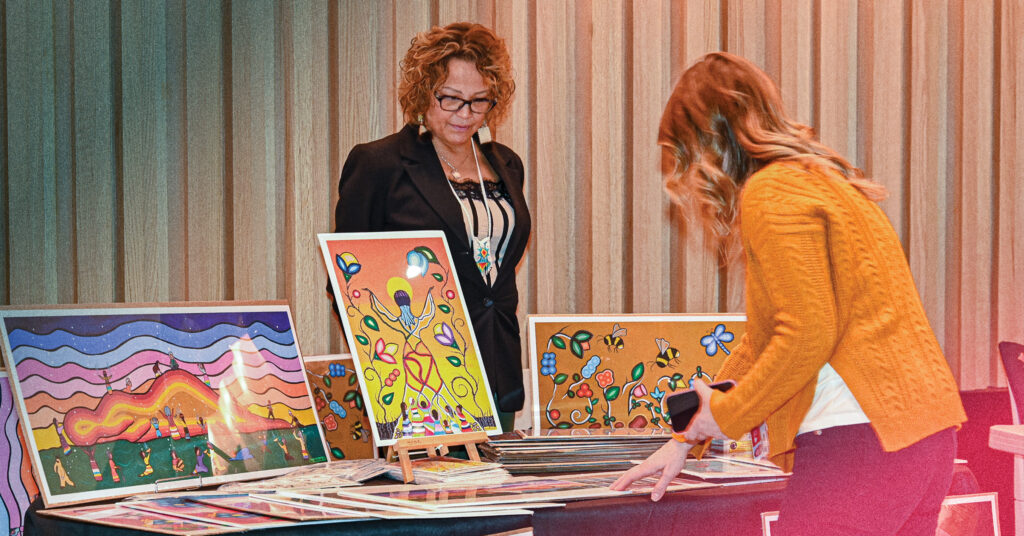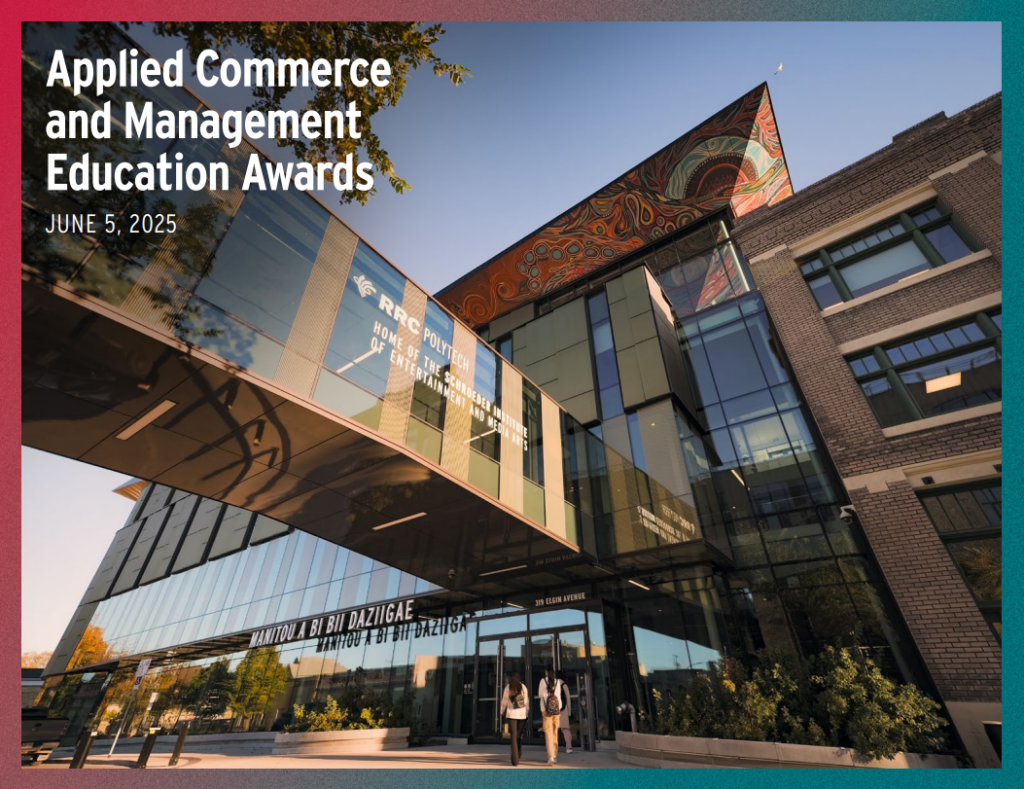2024 Bachelor of Nursing Program Pinning Ceremony Wednesday, Sept. 25 7:00PM
Meaning of the Pin
A nursing pin is a badge worn by nurses to identify the nursing school from which they graduated. They are traditionally presented to newly graduated nurses by faculty at a Pinning Ceremony as a symbolic welcome into the profession.
Most pins have a symbolic meaning, often representing the history of the nursing program for that school. The Red River College Polytechnic pin was designed by graduates of the program and incorporates the following symbols:
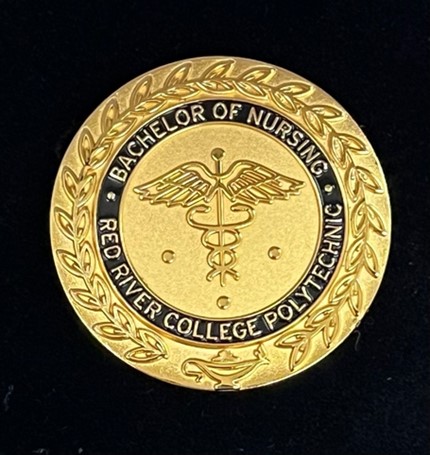
- The vine that encircles the school and program name symbolizes growth, prosperity and continual development.
- The traditional medical caduceus (two snakes wrapped around a staff with wings at the top) is understood to represent the image of a nurse as a guardian angel who provides guidance and protection.
- The three dots surrounding the caduceus represent the students’ past, present and future.
- The lamp at the base of the pin references Florence Nightingale, the “lady with the lamp,” who cared for injured soldiers during the Crimean War and revolutionized the art and science of nursing practice.
Agenda
Processional
Introduction of Guests
Tasha Gregory, Chair, BN Program-Curriculum, Research, Planning and Quality Control
Welcome Remarks
Lesley McGuirk, Associate Dean of Nursing
Congratulations
Fred Meier, President and CEO
Kerri Korabelnikov, Acting Dean, School of Health Sciences and Community Services
Greetings
Hon. Uzoma Asagwara, Deputy Premier of Manitoba, Minister of Health, Seniors and Long-Term Care
Greetings from College of Registered Nurses of Manitoba (CRNM):
Deb Elias CEO/Registrar College of Registered Nurses of Manitoba
Greetings and Presentation of the Association of Regulated Nurses of Manitoba (ARNM) Medal of Excellence
Ken Borce, President, Association of Regulated Nurses of Manitoba
History of the Pinning Ceremony / Significance of the BN Pin
Allyson Cooper, Chair, BN Program – Nursing Labs and Simulation
Introduction of Graduates
Myrna Davis, Chair, BN Program – Clinical Year 1 and 2
Presentation of Nursing Pins and Roses
Joanna Simmons-Swinden, Chair, BN Program – Theory Year 3 and Offsite Programs
Sandra Holben, Chair, BN Program – Year 3 Clinical and Senior Practicum
Allyson Cooper, Chair, BN Program – Nursing Labs and Simulation
Closing Remarks
Tasha Gregory, Chair, BN Program – Curriculum, Research, Planning and Quality Control
Recessional
Audience to stand as graduates leave.
Graduates
Ager, Emma
Akinola, Victoria
Alexander, Yonar
Alpecho, Nyssa
Arjoon, Laila
Armah, Naomi
Asino, Mark
Ausrotas, Kristi
Baertsoen, Peyton
Balashova, Anastasiya
Bauer, Melissa
Beach, Heather
Bettig, Peyton Capri
Binas, Zaira
Boychuk, Kirsten
Braza, Zhunhen
Bugriak, Diana
Buhr, Noah
Bullert, Emanuel
Caillier, Samantha
Cameron, Erin
Castillo, Janessa
Christensen, Soren
Ciurko, Melissa
Comber, Mia
Cook, Alexandra
Cooke, Kyla
Crosby, Jaidyn
Dalog, Karen
Danis, Mia
Dashevski, Beniamin
De Jesus, Glyzielle
De Medeiros, Chanel
Derewianchuk, Lisa
Deza, Novi Grace
Dhillon, Japneet
Diaz, Jillian
Dizon, Maria
Dodds, Riley
Doerksen, Camryn
Doerksen, Megan
D’Ombrain, Zoey
Domingo, Marie
Done, Hannah
Drimes, Emma
Duncalfe, Nicholas
Dunn-Gray, Janessa
Duplak, Natalie
Erickson, Alexandra
Erickson, Chyann
Escasinas, Juan Sebastian
Fast, Katie
Fehr, Rachelle
Forsyth, Jenna
Fulci, Francesca
Funk, Kristy
Gamble, Lea
Gareau, Mark
Garrioch, Tara
Gauthier, Drue
Gebhardt, Tori
Giesbrecht, Ashley
Giesbrecht, Emily
Godlein, Tori
Gomes, Carson
Green-Monkman, Lexi
Hammersley, Nicole
Hampson, Sara
Harb, Nadia
Harrison, Cassidy
Hempel, Natalia
Hernandez, Chiara Marie
Herzog, Sydney
Hofer, Corina
Hubert, Makayla
Isse, Asia
Johnson, Cameryn
Johnson, Kayli
Joven, Jacqueline
Kalden, Leah
Kathan, Ashley
Kauk, Paige
Kinakin, Lauryn
Klassen, Martha
Klippenstine, Taylor
La Rosa, Alessandria
Leano, Jayson Don
Legall, Kayleigh
Llemit, Rina
Lockhart, Jayden
Lopez, Christian
Lumahang, Holly
Lunn, Cara
Madarang, Jan Yvonne
Maglalang, Abigail
Marante, Rafael
Martin, Tessa
Mathur, Vaibhav
McCharles, Marlayna
McHugh, Caitlyn
Mendoza, Fria
Mendoza, Wennie Mae
Meniru, Ebele
Metzler, Violetta
Miniano, Kimberly
Mohamed, Yonatan
Monahan, Priya
Morissette, Analie
Muir, Hayley
Neufeld, Amanda
Neufeld, Bailey
Nichols, Chelsea
Nickart, Tayler
Nold, Manuel
Nott, Jessica
Novilla, Ajay
Nuguid, Scarlet
Nunn, Felicia
Ofiaza, Angela Mae
Ogbonna, Susan
Ogundare, Olufolake
Ogunlana, Ibironke
Omidele, Ebunoluwa
Parago, Hayley
Parel, Sandra
Parker, Emily
Patel, Meghalben
Peters, Shaylee
Pham, Jennie
Pilapil, Christian
Potorieko, Shemaine
Quitalib, John Alexis
Ramones, Christian
Recana, Chantelle
Rex, Hailey
Richard, Madison
Robinson, Rebecca
Rogalsky, Anna
Romero, Angela
Russell, Jessica
Russo, Daniela
Sabourin, Milan
Sadovski, Ela
Sheldon, Olivia
Shorting, Vanessa
Sibayan, John Jr
Sidhu, Jasdeep
Smith, Brett
Stagg, Claudia
Stoupe, Makayla
Subol, Beanca
Swaan, Sherie
Tailor, Sarita
Tamondong, Anthony
Tomiuk, Keyona
Towle, Madison
Tran, Huynh Quoc Huy
Truthwaite, Shayla
Tschetter, Tia
Tutkaluk, Ciara
Ubhi, Amol
Unruh, Kelly
Verspeek, Gabrielle
Vickery, Miranda
Vij, Reena
Webb, Cassidy
Wiebe, Sarah
Wyryha, Tiana
Zanella, Christina
Zeke, Rachelle
